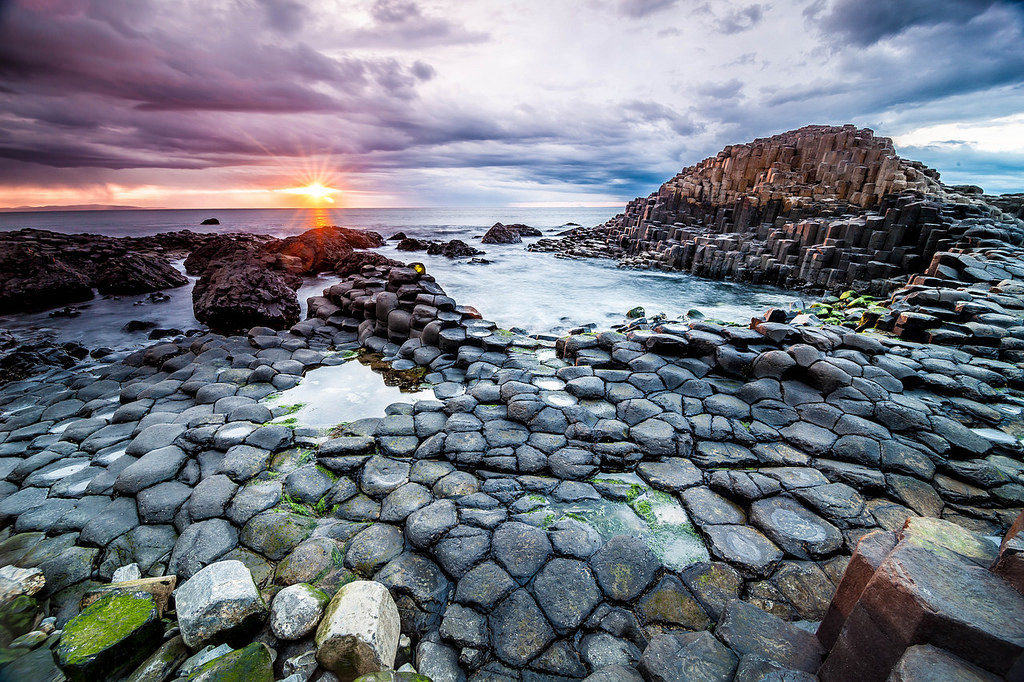A church built on a rock surrounded by the sea and only easily accessible only at low tide. Prehistoric pile-dwellings on a lake in the Alps. A tea plantation not in India, China or elsewhere in Asia but the continental United States. So many of My Must See highlights are man-made.
But how incredible are the naturally occurring phenomenon that surround us? This month’s featured Must See is located in Ireland. Giant’s Causeway is a unique stone formation along the Irish coast made by volcanic eruptions. But what is amazing is that the formation is roughly 40,000 basalt columns. It might look like a pathway carefully crafted by human hands. But it’s not! It is just Nature doing its thing.
Giant’s Causeway
There are different takes on the mythology. The local legend tells that the basalt columns were actually a road across the North Channel connecting Ireland with Scotland. Two giants (Irish giant Finn MacCool and Scottish giant Benandonner) wanted to challenge each other to a battle of strength. Finn builds the pathway. When he is done, he is so exhausted that he takes a nap.
Benandonner storms over the new causeway and is unable to find Finn. Finn’s wife Oonagh is clever. She covers her sleeping husband to make him look like a baby. When Benandonner shows up, she tells him keep his voice down and not disturb her child. Benandonner sees how large the baby is and he becomes concerned. If the baby is this large, just how large might the father be? Instead of staying to find out, he turns back to Scotland and destroys the pathway. Today, the portion in Ireland is all that remains.
Located on the northeastern coast of Ireland in County Antrim, Giant’s Causeway has been a UNESCO World Heritage Site since 1986. It’s also a popular tourist spot, attracting half a million tourists annually. While Finn might get the credit, it is said that the Bishop of Derry “discovered” the unusual volcanic rock formation in 1692. The following year Sir Richard Bulkeley presented the existence of Giant’s Causeway in a paper to the Royal Society.
Without getting too scientific (as I am certainly no geologist), the unique formation is due to molten basalt being forced up through cracks in the chalk bed. Further cracks occurred, causing the basalt to remain pillar-like. Like with many natural wonders, there are different formations with names. The Chimney Stacks, for example, are tall, narrow columns. These columns are 50 to 60 million years old.
Visiting
Today, visitors to Giant’s Causeway have much to explore. There is a visitor’s center with special visitor experiences. Visitors can also take walking tours that range from novice to expert. Wander out along the basalt columns or observe the area’s special flora and fauna. You can learn more including prices, hours and directions from The National Trust.
Looking for more Must Sees? Check out previously featured locations!
Photo by Stefan Klopp.

Pingback: Travel Must See 2016: Japan to France and Beyond - Reverberations